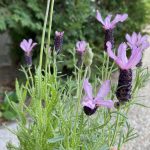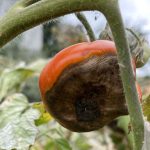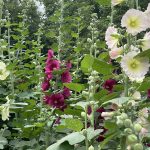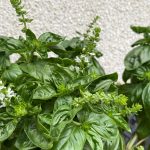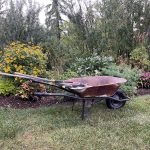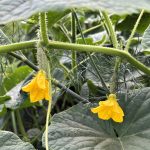Garden preparation for winter impacts its performance in the next growing season.
Fall garden preparation affects soil, plant, insect, and pollinator health.
This blog will cover tips for cleaning up your vegetable garden after harvest, which plants to pull up versus which plants to trim, how to cover Fall planted bulbs, what to do with your garden in extreme cold, and other garden preparation tips for winter.
As we dig into this, remember that there isn’t one answer for every garden scenario, but that each growing space is unique. Mix and match these fall garden preparation tips as it best fits your situation.
Tips for Cleaning Up Your Garden After Harvest
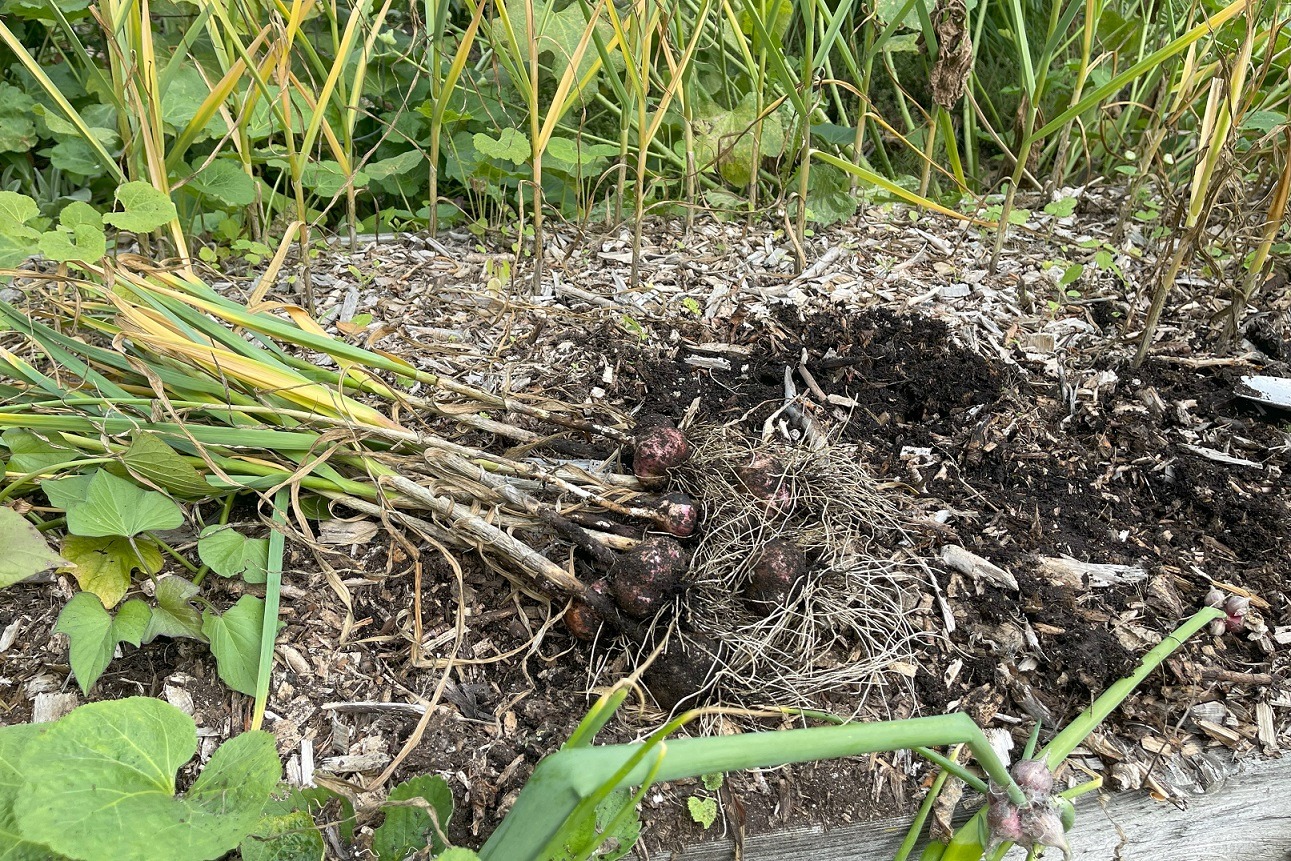
One could think of fall garden prep as the first step of spring gardening.
The overall goal for fall garden cleanup centers on maximizing soil health for the next growing season, whether after a vegetable garden harvest or tidying up a perennial garden.
Improving soil quality is accomplished by adding organic material, using mulch, and reducing tillage. Let’s tackle each of these separately.
1. The Benefits of Adding Organic Materials to Soil

Garden soil quality improves by adding organic material.
‘Organic’ has two distinct meanings:
- Organic materials are those that occur naturally in the environment and decompose over time.
- These inputs can be ‘organic’, meaning they contain no harmful chemicals.
Mixed compost, well-composted manure, and plant matter from the garden are examples of organic materials.
Organic matter improves soil structure, water holding capacity, nutrient composition and its ability to hold those nutrients.
Fall is the ideal time to add organic matter to the garden because winter provides plenty of time for soil bacteria and fungi to break these materials down. And yes, these microbes work during the dead of winter.
How much organic material should be added to the top of the garden soil?
A 5-8cm (1-2″) layer of high-quality compost will benefit soil structure, nutrient content, and water and nutrient holding capacity each fall. Always use compost with no chemical additives for food gardens.
Vegetable gardens generate readily available plant remnants that build up soil quality, too.
Here are a few ideas and tips to address vegetable plant material, and I’ll let you weigh the options as they work best for your gardening space.
Strategies for Dealing with Vegetable Plant Debris After Harvest
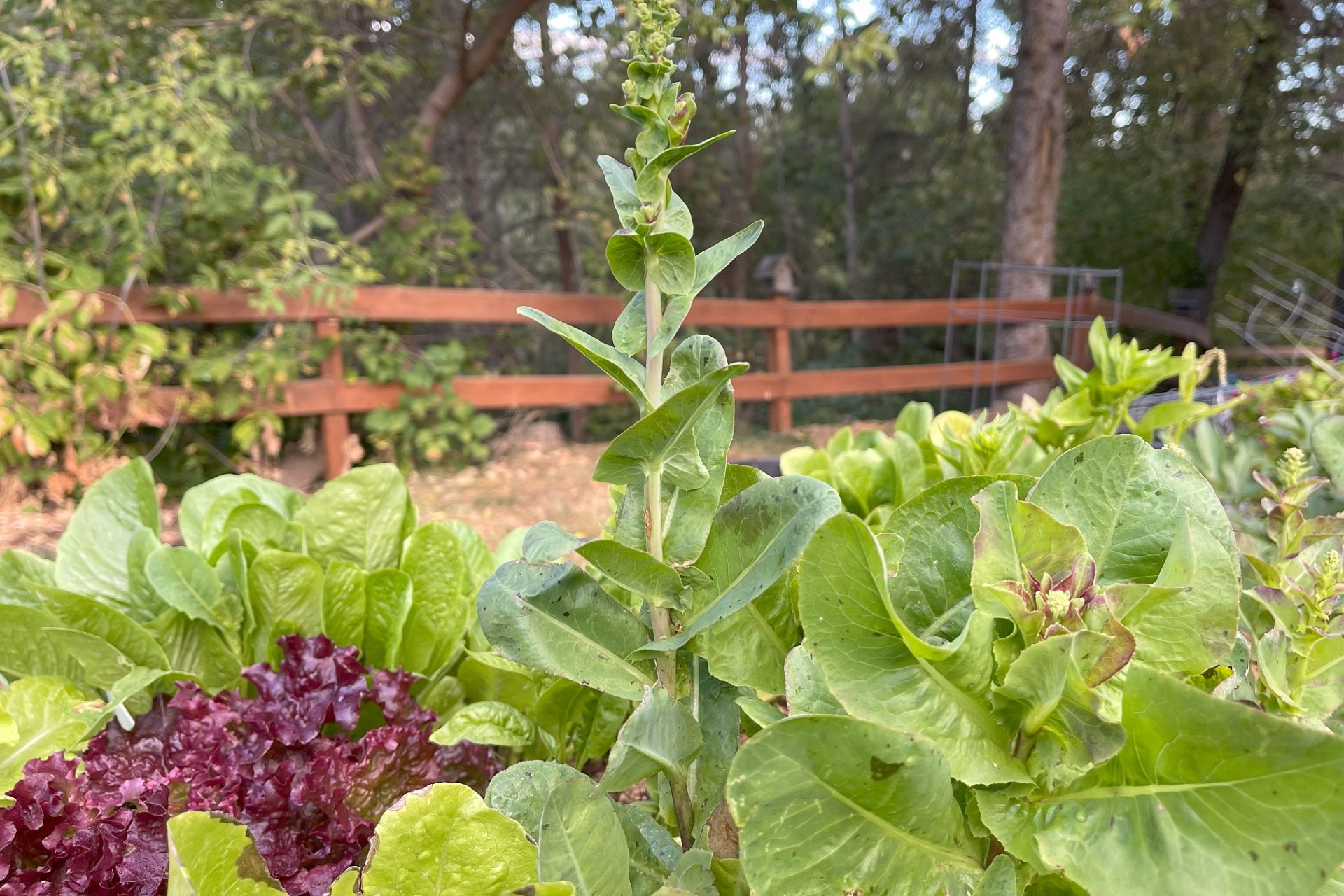
a. Leave all the Vegetable Plant Rubble in the Garden to Decompose Through the Winter
Pros: Nutrient content is improved, and the roots left in the ground improve the soil’s carbon content.
Cons: The plant debris should be chopped to facilitate breakdown, and it’s more difficult to spread organic matter.
b. Remove all Vegetable Plant Debris from the Garden
Pros: It makes it easy to spread organics over the garden.
Cons: Less opportunity for nutrient build up from the remnants because they were removed.
c. Leave Some Vegetable Debris in the Garden and Remove Some
Which vegetable rubble to take out of the garden: It is a good idea to remove tomato and potato plants from the garden these vegetables have a way of harbouring diseases that are difficult to eradicate from the soil.
Which vegetable remnants to leave in the garden: Plant materials like carrot tops, lettuce, and beans, which break down more efficiently, can be left in the garden to compost. Corn stalks can be incorportated into the soil after they have been put through a chipper.
Pros: Removing potato and tomato plants reduce the risk of soil-borne diseases and increased nutrient content.
Cons: Large pieces of vegetable rubble can take a while to decompose.
2. The Role Mulch Plays In Preparing Gardens for Winter
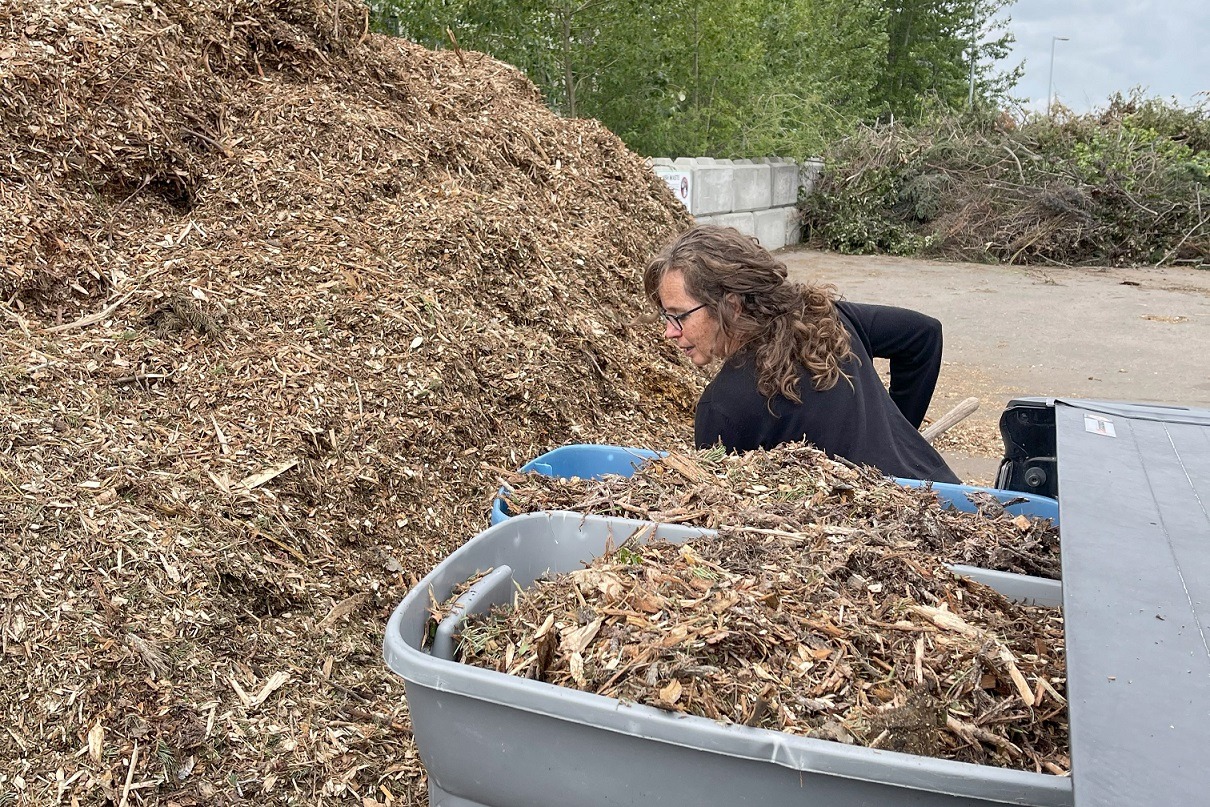
Mulch is one of my favourite things; I call it my gardening best friend.
Mulch is a protective layer of covering material placed on the soil surface and spread around the bases of plants.
Soil is a complex, living thing that should always have some mulch covering.
If soil is left bare during any season of the year, it is at risk for moving over into someone else’s yard via the wind, leaving the top layers of soil structure and microbial activity unprotected.
As you walk through a forest, you will notice that mulch is a part of nature’s design to guard and fortify soil.
Mulch is beneficial for flower gardens, vegetable gardens as a cover near the plants, in walkways, raised bed gardens, and I even use it in my planted containers.
I use mixed mulch, which is mulch that contains a blend of wood chips, leaves, and plant debris in my garden.
I divide mulch into two categories: Organic and Inorganic.
Organic mulch occurs naturally in nature. Organic mulches are by-products of plants like bark chips, leaves, and straw or straw pellets, and they disintegrate, or decompose, over time.
Organic mulches are the most beneficial for gardens because they break down and contribute to soil structure and improve nutritional content.
Inorganic mulches are human-made. Examples of inorganic are rubber chips, gravel, stone, and landscape fabric, which can be detrimental to soil. Never use inorganic mulches in food gardens.
Organic mulch benefits gardens by maintaining consistent soil moisture levels, weed control, adding nutrient content to the soil, improving soil structure, and it is vital for soil temperature control. Mulch insulates soil in winter and cools it down in the summer.
And mulch makes garden maintenance so much simpler!
What to Do with Mulch When Preparing a Garden for Winter
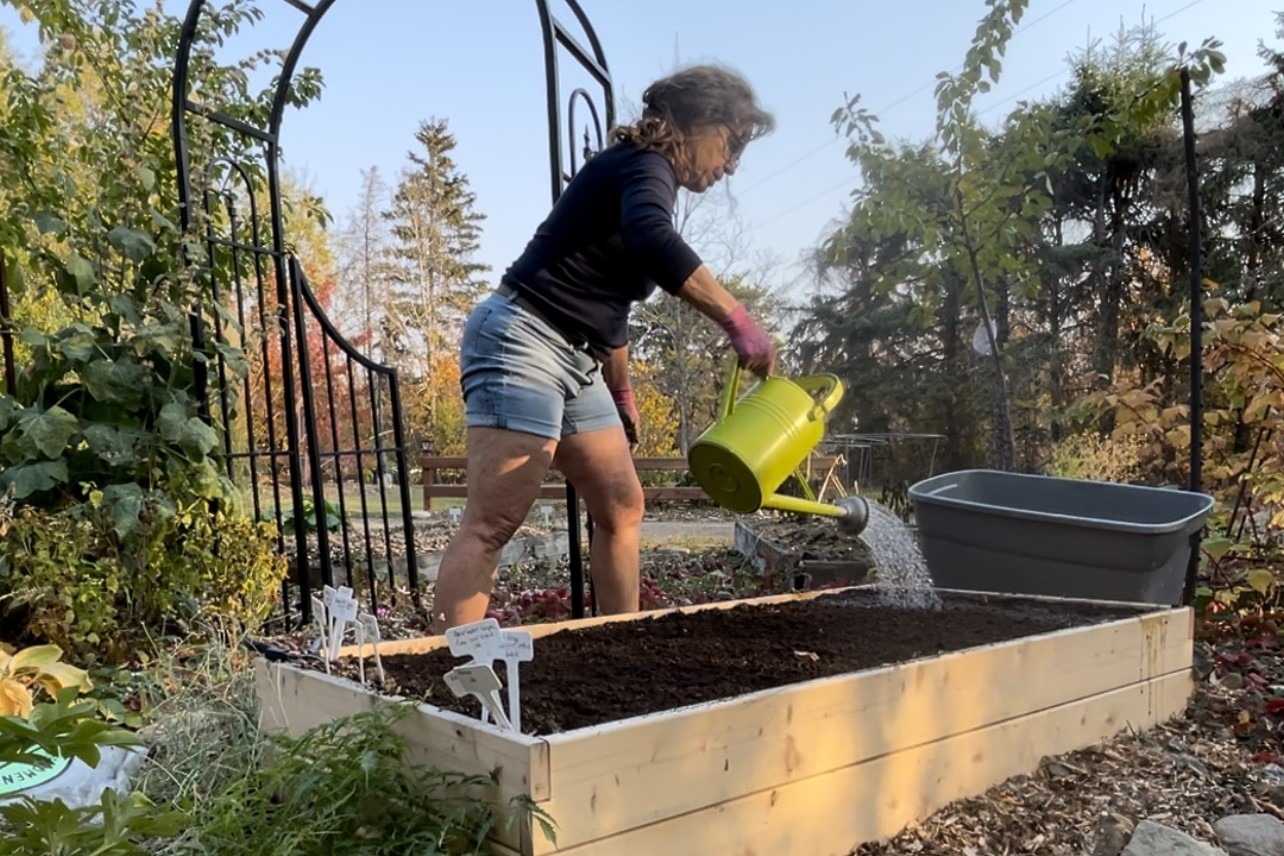
- After the garden has been cleared in the Fall, mulch can be gently worked into the top few centimeters of soil, but if there is too much, move it to the garden’s perimeter.
- Then, add a layer of organic materials, disturbing the soil as little as possible.
- Water in the new layer of rich compost well.
- After that, reapply the leftover mulch and top it up with new mulch. You can also apply a fresh layer of mulch to a height of 5-8 cm (2-3″).
Related: What is Mulch? Making Garden Magic with Mulch
3. How Reducing Tillage Improves Garden Soil
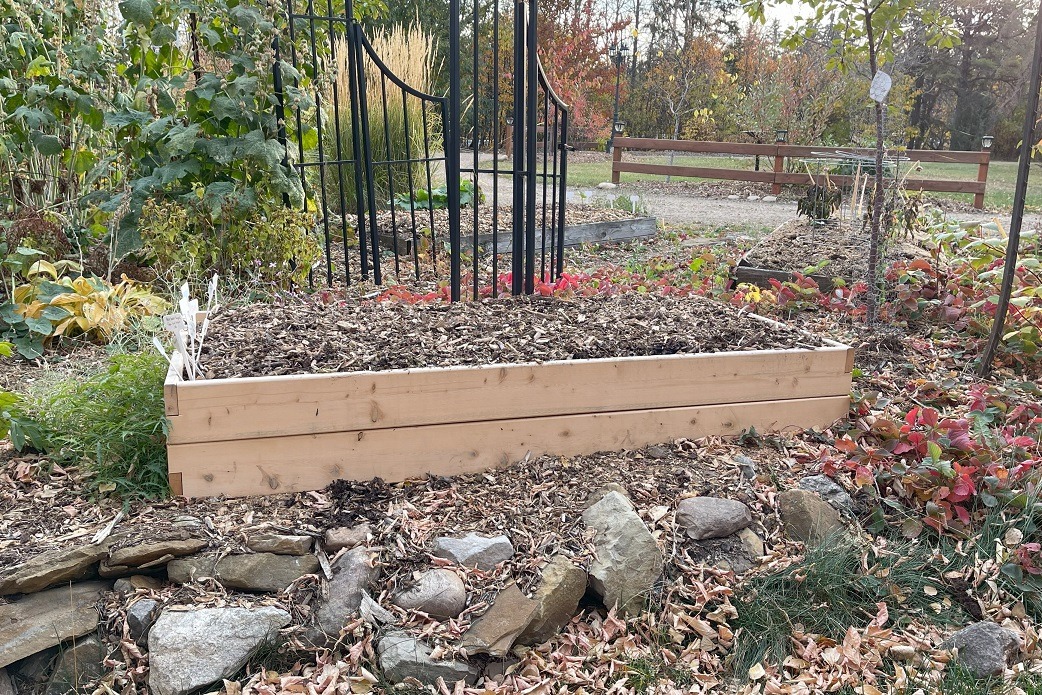
Research is revealing that soil isn’t a simple collection of dirt particles that it was thought to be in the past. But soil is actually a very complex, interdependent system of structural materials, microbes, and plants.
Sand, silt, and clay comprise the soil foundation, or the building, and how much of each determines the soil’s aeration, water and nutrient-holding properties.
But soil is so much more than just physical building materials.
Fungi, like mycorrhizae, beneficial soil bacteria, and plant roots, fill that structure with nutrients and water.
Research shows that regular tilling breaks down soil and microbial structure, which reduces nutrient and water-holding capacity and makes soil more susceptible to compaction.
Regular organic material inputs should keep the soil loose and workable, but if the soil has lost structure, it takes a while to build it up.
Related: The Fungi Factor: The Importance of Minimizing Tilling to Protect Soil Health
What Plants to Pull vs Trim in the Fall
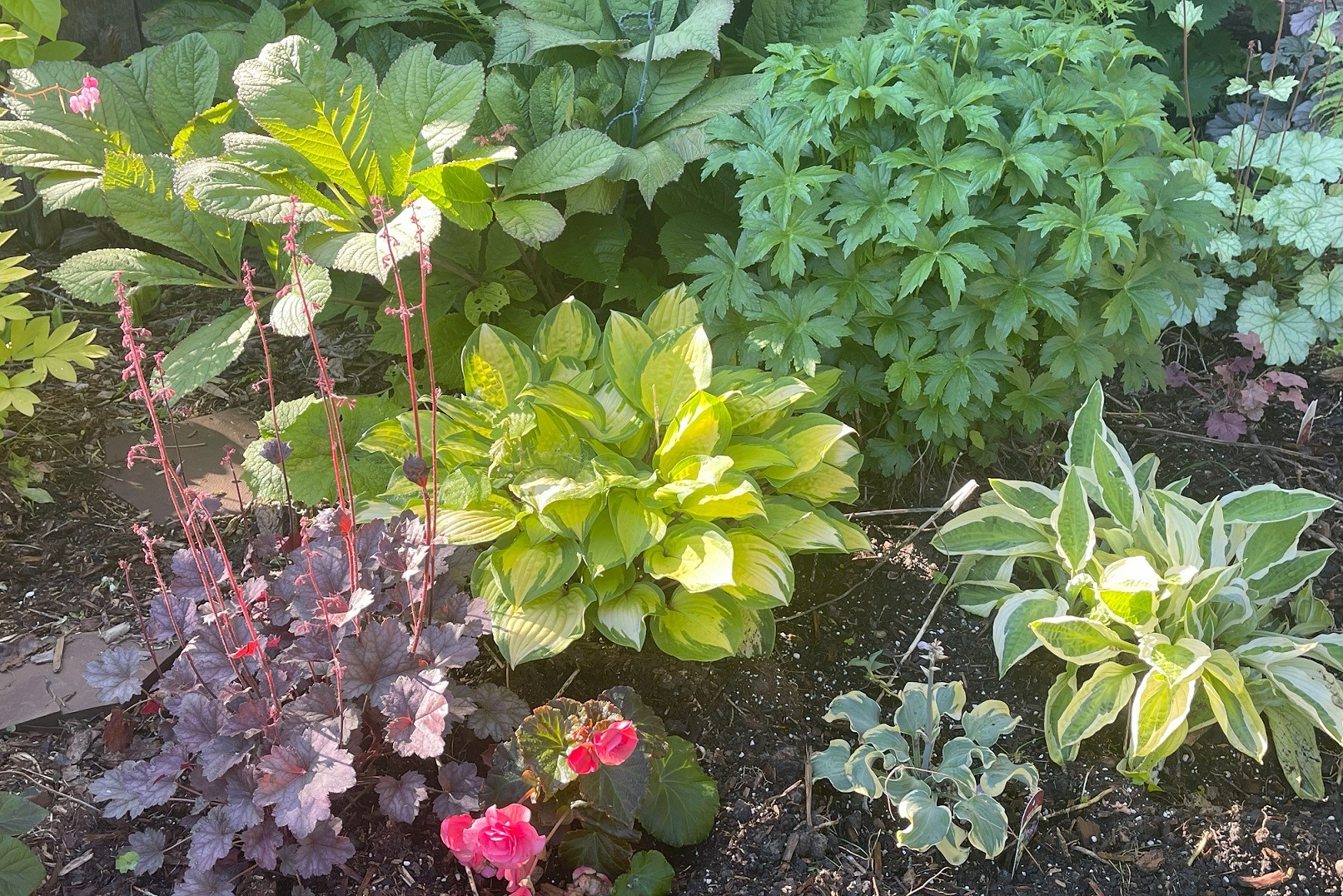
After the above discussion on soil amendment, organic inputs, and mulch, you may be wondering about practical ideas for which plants to pull out of the gardens and which ones should stay in place when getting a garden ready for winter.
We covered vegetable garden strategies above, so let’s discuss plants in the perennial garden.
There are Three Basic Approaches to Deal with Perennials in the Fall:
- Leave everything where it stands and let the perennials overwinter untrimmed.
- Cut all the perennials down in the fall.
- Do something in the middle of the road; leave some perennials untrimmed for winter interest and cut others down.
My blog, Three Versatile Fall Garden Cleanup Strategies, covers the advantages and disadvantages of these three approaches and how to do them.
The only hard rule I have about trimming perennials is to cut down Delphiniums, Aconitum (Monkshood), and Lilies flat with the surrounding ground to reduce the recurrence of Delphinium Worms and Scarlet Lily Beetles.
Find out more about how to deal with these pests here: How to Get Rid of Scarlet Lily Beetles, How to Get Rid of Delphinium Worms.
How to Cover Fall Planted Bulbs
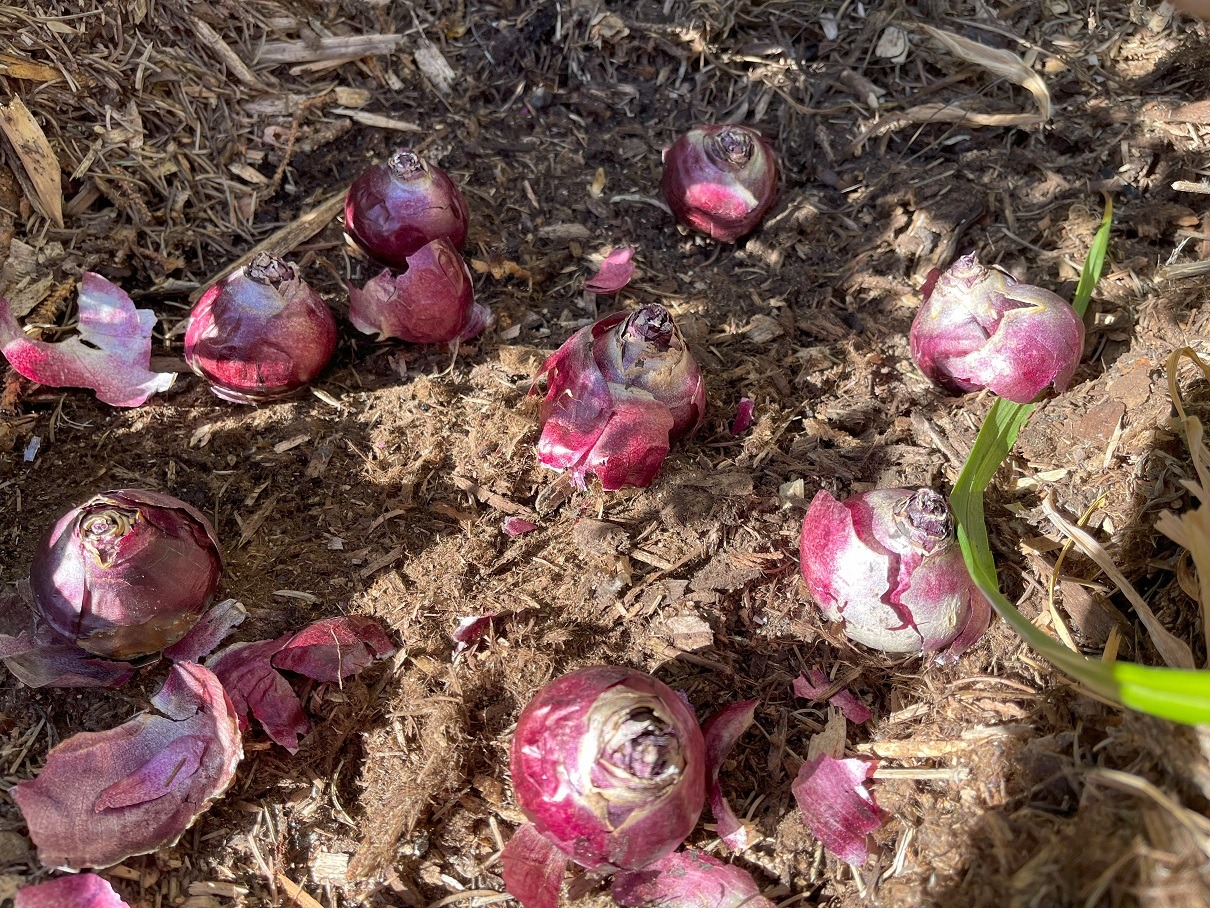
Fall bulbs are unique plant storage structures that release stored energy in the fall to initiate root growth in response to declining soil temperatures below 12 C (55 F).
Fall bulb root growth is essential, as it is needed to support the rapid spring growth that happens when the weather warms.
Most bulbs need 5-6 weeks to grow their roots before the ground freezes solid.
For zone 3-4 gardeners, plant fall bulbs in mid-September to mid-October.
All Fall bulbs require a period of vernalization, which is basically a winter nap. Then, after 12-16 weeks, they burst into action as soon as the weather warms up, often before the surrounding trees develop leaves.

The best way to protect Fall planted bulbs through the winter is to apply a 5-8 cm (2-3″) layer of mulch to the soil above the bulbs.
Mulch insulates roots and levels out soil temperatures, protecting the bulbs from unseasonably warm weather in the fall and cold temperature dips in the spring.
I recommend wood and bark chips because they are very effective at insulating the soil and are the simplest to work with.
For more on Fall planted bulbs: The Ultimate Guide to Fall Bulbs in Canada
What to Do With Your Garden in Extreme Cold
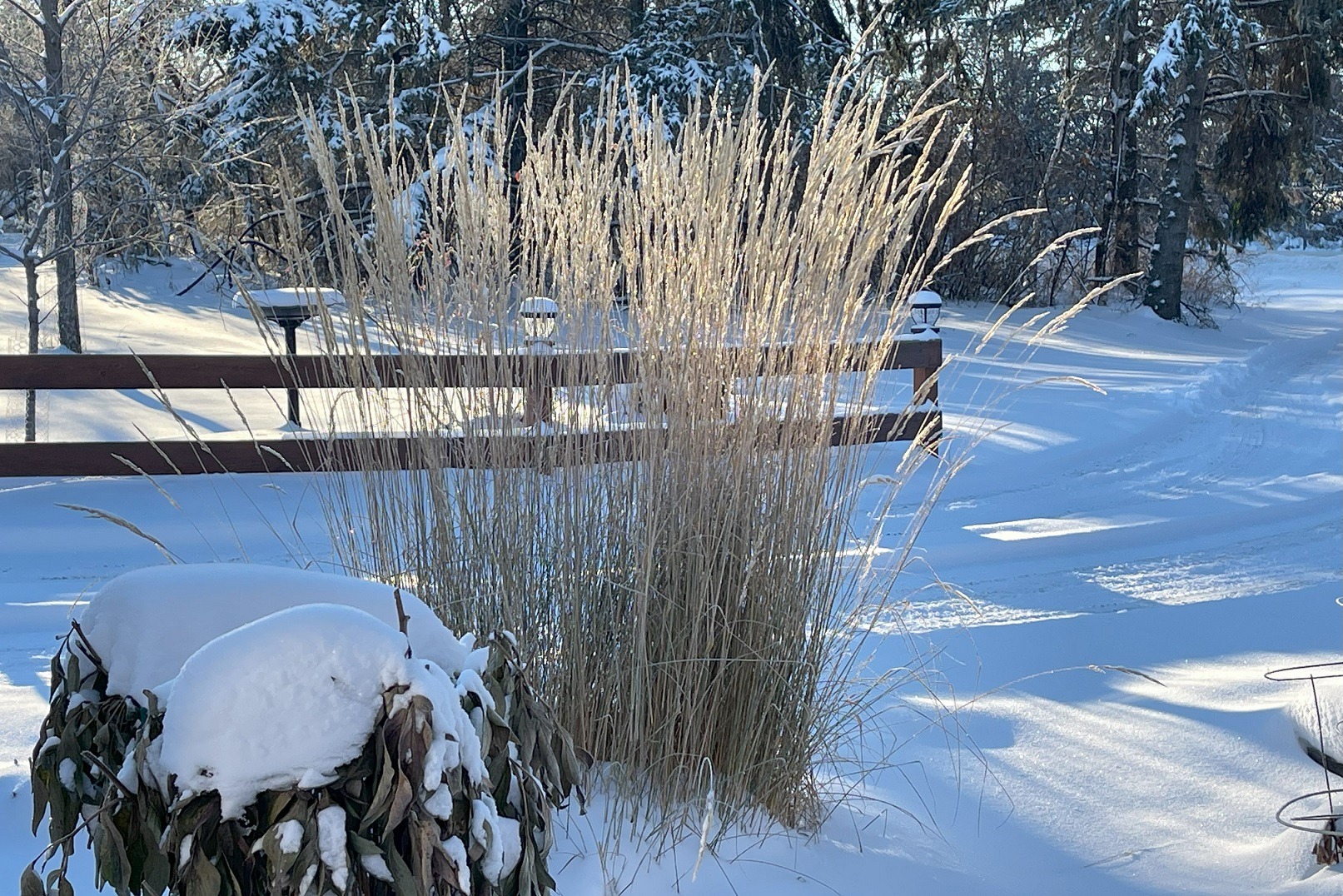
It can be said that extreme cold is a guarantee for gardens in plant hardiness zones 4 and lower, where the temperatures can easily dip below -30 C (-22F).
Related: What are Plant Hardiness Zones & How do They Work?
How does a gardener deal with this reality??
The key to gardens surviving extreme cold is preparation in the Fall.
Ensure the garden is topped up with a 5-7 cm (2-3″) layer of organic mulch.
Organic mulches like wood and bark chips, cedar chips, and leaf and mixed mulches help insulate roots and average soil temperatures.
Spread an extra layer of mulch over perennials that are a bit tender once their foliage has died back.
Snow is the other thing that helps fight cold weather by insulating garden soil.
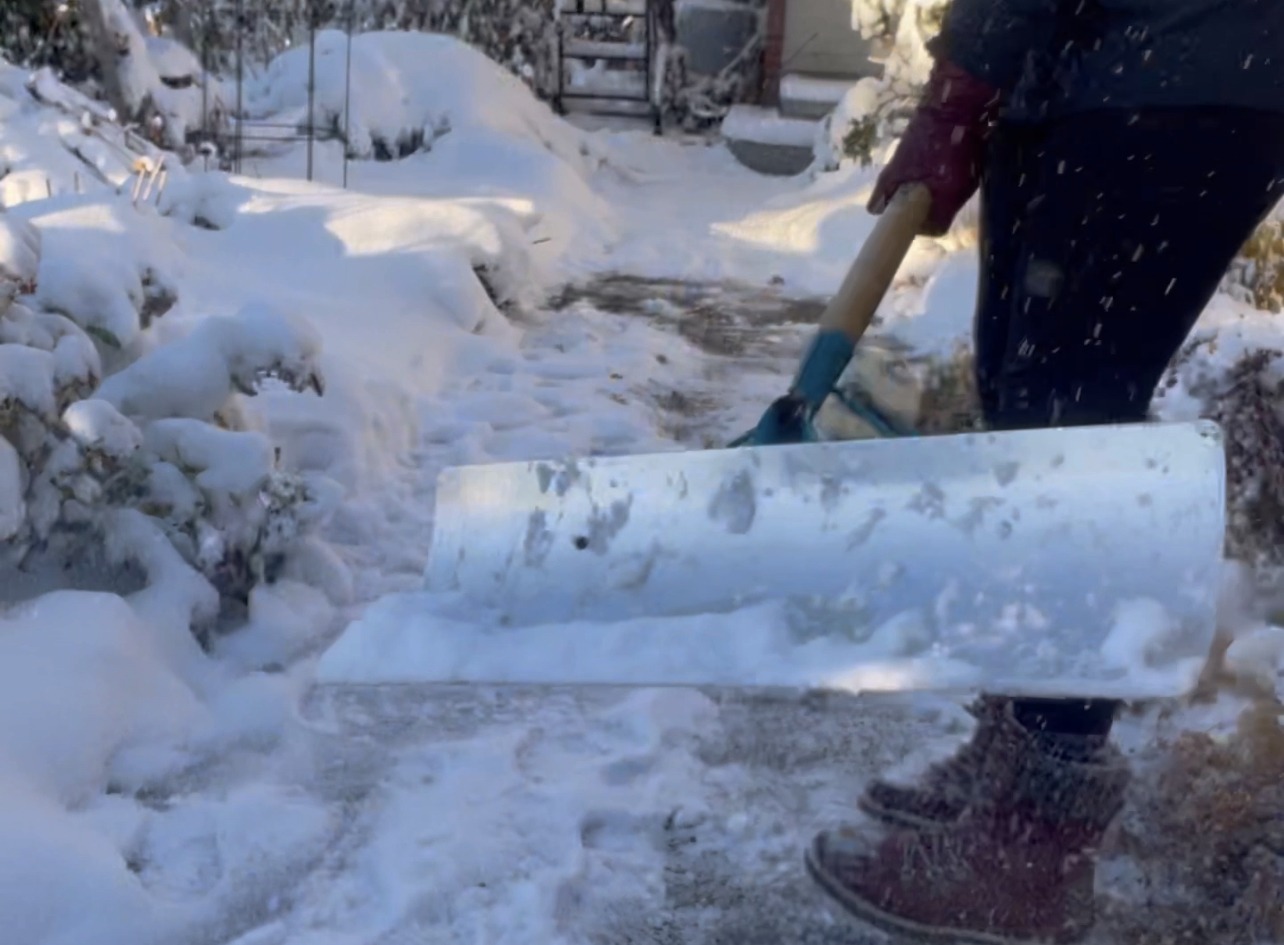
I like to call snow the prairie gardener’s superpower because it has incredible insulation capabilities.
Snow is an excellent insulator because it is 90-95 % air.
Pile snow onto perennial garden beds as you clear snow from sidewalks or driveways.
Snow also contributes water to gardens as it melts in spring.
Other Tips to Prepare Your Garden for Winter
I have four final, quick and helpful tips for how to prepare your garden for winter.
1. Maintain Soil Hydration Through the Fall
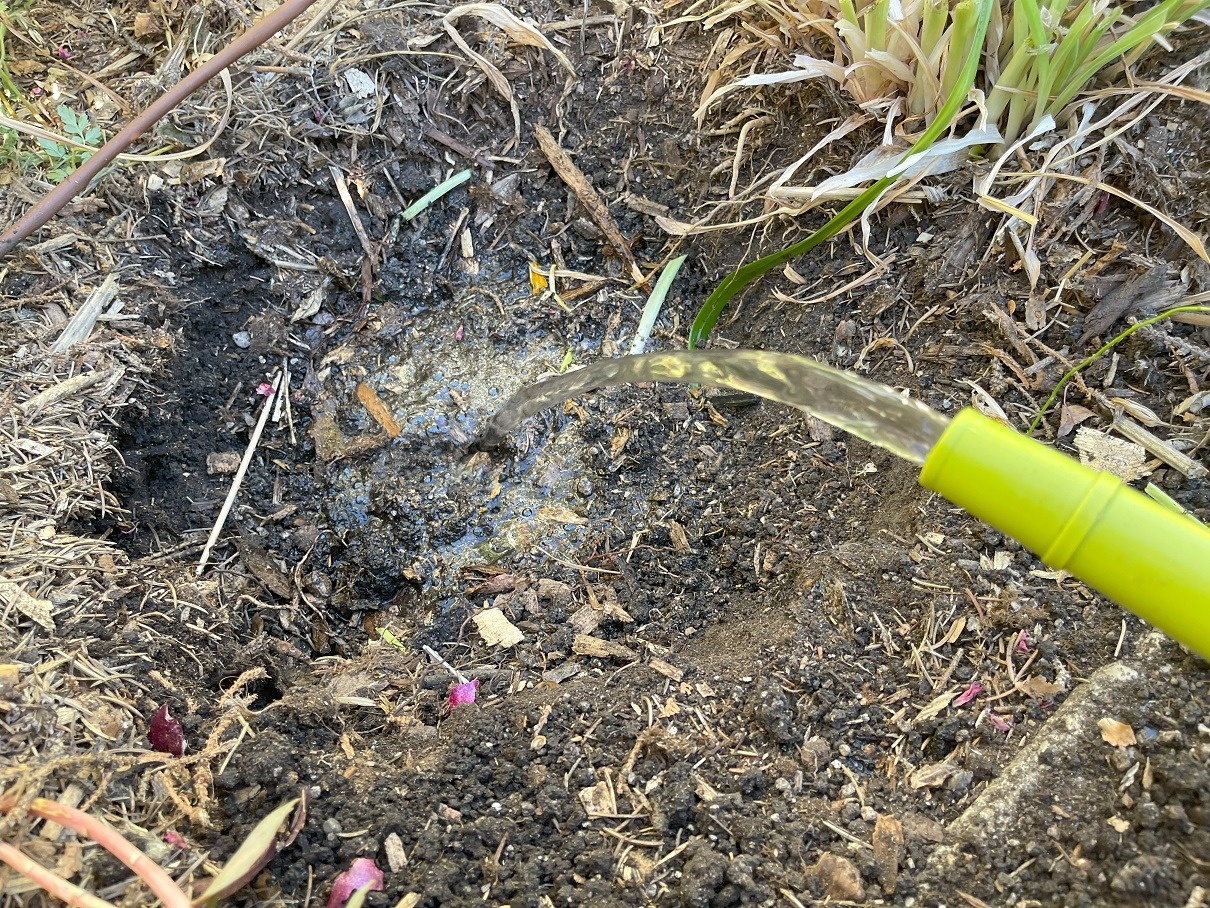
Fall is naturally a drier season, and the importance of keeping gardens hydrated can’t be overstated.
There are two main reasons to keep the soil moisture stable:
First, going back to building up the soil for the next season, soil microbes need water to do their work through the winter, breaking down and incorporating the new organic materials added in autumn.
Second, perennial plants, including trees and shrubs, experience their last opportunity to build up their roots and resources for winter during the fall.
Well-hydrated, healthy plants have more stamina to get through the winter and bounce back into spring growth faster than dehydrated ones.
It’s easy to forget to water perennials in the fall because the weather is cool, and we don’t often think about them needing water.
Perennials don’t need as much water in autumn as in summer, but they need to stay hydrated during the later months of the growing season.
How to Prevent Perennial Dehydration in the Fall
- Keep garden (vegetable and perennial) soil evenly moist, and there’s no need to fertilize in autumn because perennials have very low, if none at all, fertilizer requirements this time of year.
- Check perennial soil hydration levels twice weekly during autumn by sticking the entire length of your index finger into the soil. If the soil is dry at the tip of your finger or the first knuckle, it’s time to water.
2. Avoid Pruning Trees and Shrubs in the Fall
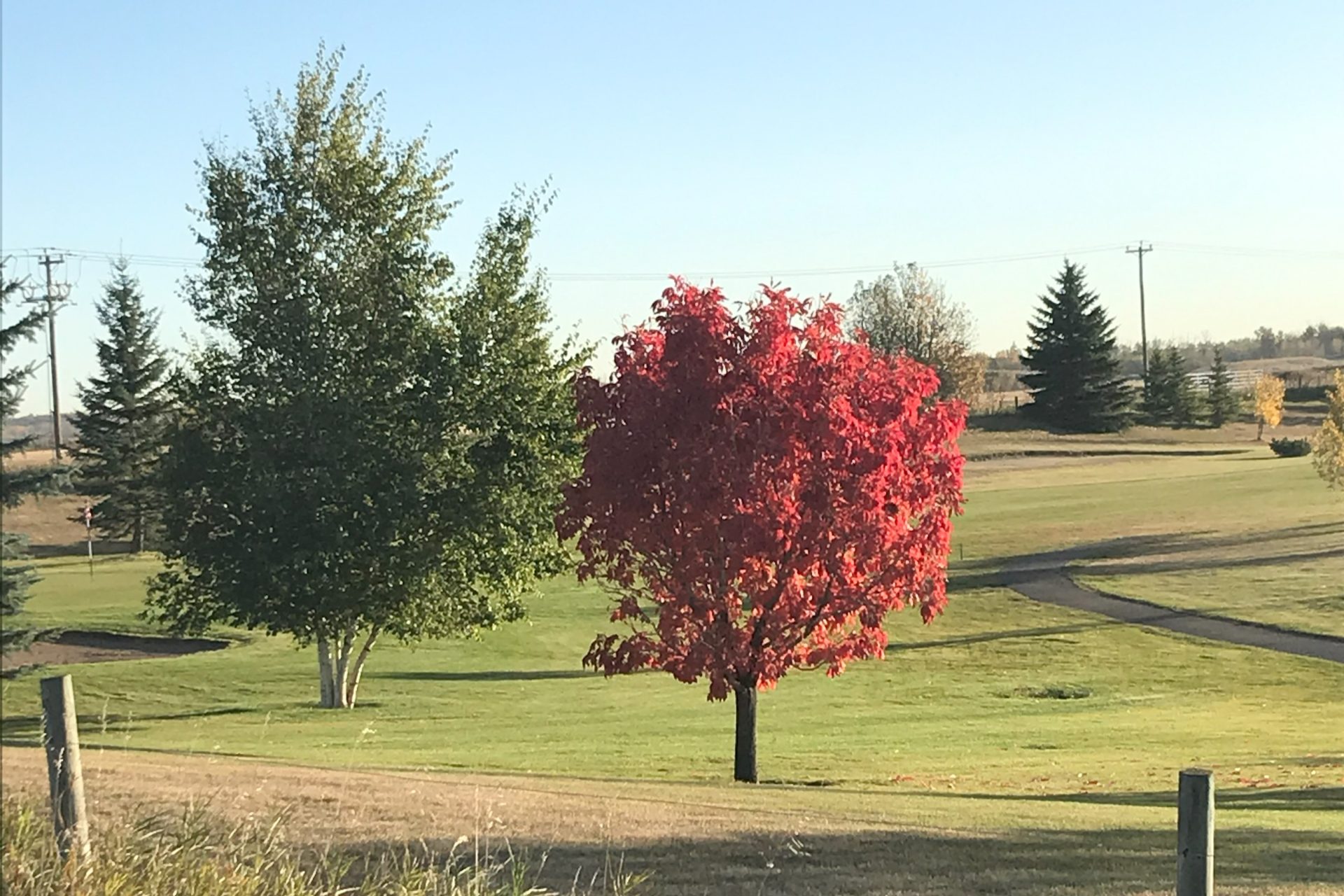
For most species, autumn and winter are not good times to prune trees.
Trees and shrubs are either dormant or going dormant in the fall and shifting their resources to fortify their roots, resulting in less available nutrients for wound healing and fighting disease through open cuts.
Pruning in fall and winter makes trees vulnerable to adverse events, such as extreme temperature fluctuations, heavy frost, and snow.
Related: The Best Time to Prune Trees
3. General Fall Yard Cleanup Tips

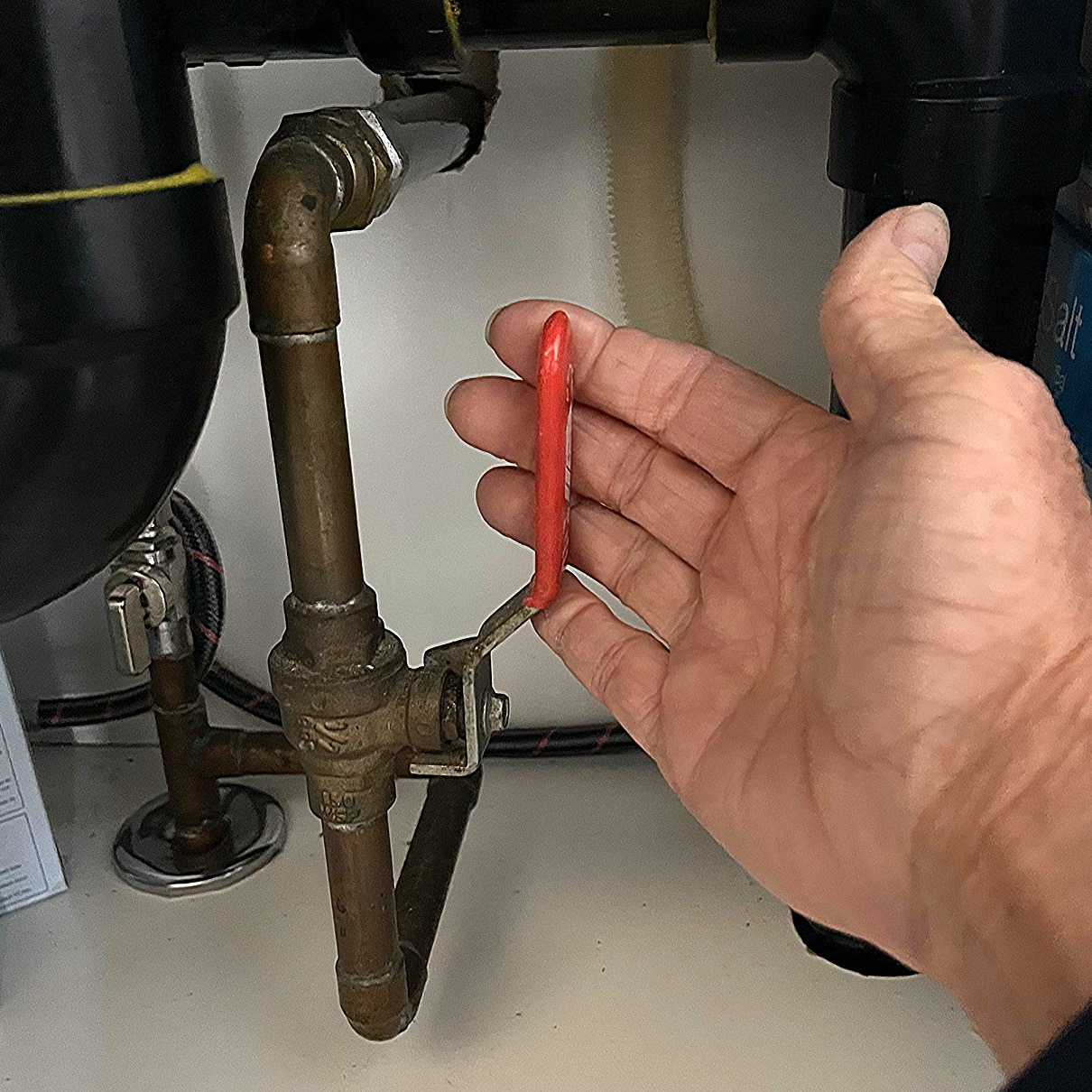
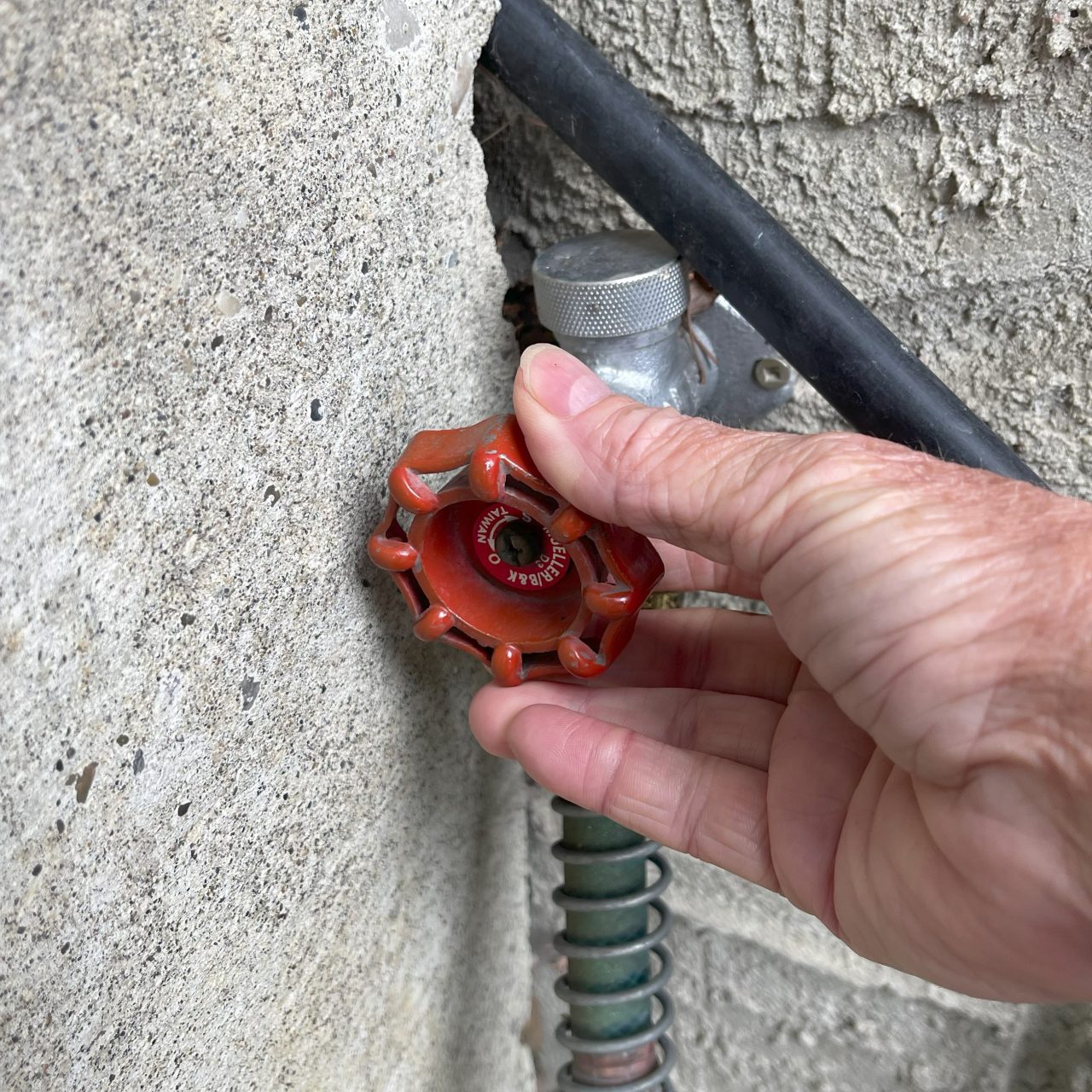
Fall is the time to care for and protect gardening equipment related to damage caused by water as it expands under freezing conditions:
- Drain hoses and irrigation systems to prevent them from bursting when water expands as it freezes.
- Roll up and store hoses in a sheltered place.
- Turn off water valves inside the house that lead to outdoor outlets and open the outdoor faucets to drain them and allow for water expansion when it freezes.

Also, clean garden tools, like spades and clippers, and empty flower pots in hot, soapy water so they are ready for action when spring arrives.
Is Your Garden Ready for Winter?
I hope that these tips have been helpful as you plan and prepare your garden for the coming winter.
Apply and customize these tips to work best in your gardening space, knowing that you can have a powerful influence on making your garden amazing next spring.
©Sharon Wallish Murphy ©Gardening with Sharon














